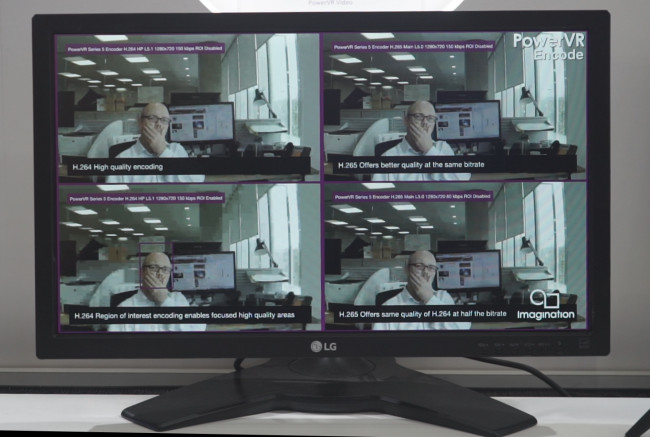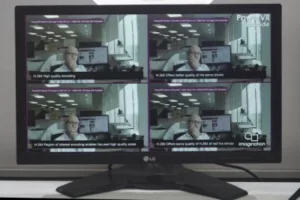Imagination Technologies had a number of demonstrations that were similar to those at CES. They focused on the capability of Imagination in GPUs and in video processing. The first product we looked at was the Huawei Mate 8 which has a HiSilicon Kirin SoC which includes the Imagination video cores supporting H.265. The video cores were also being shown in the Intel-based Google Nexus media player which can support multi-stream decoding and compositing of multiple streams on the GPU.
One of the features that has impressed us before from Imagination is its “region of interest” video processing which identifies which part of the image is most important and focusing power and bit rate to that part of an image. We have spoken before about “foveated rendering” for 3D rendering, and it seems that gaze could also be used to optimise video in the same way for video conferencing.
 Imagination’s “Region of Interest” video encoding can boost quality at fixed bit rates or cut the bit rate needed for a given quality.
Imagination’s “Region of Interest” video encoding can boost quality at fixed bit rates or cut the bit rate needed for a given quality.
Imagination bought MIPS several years ago and at the show, the firm was showing how the processor can use a hypervisor to support multiple instances of OpenWRT which is a software environment used in routers and network boxes. The use of virtual machines allows much more secure products with individual functions running in single instances. The chip has been developed to support WebRTC for rich communication applications using browsers.
The company was showing its smallest GPU, designed for wearables and low cost phones as well as STBs and TVs. The chip can also be used in automotive applications. The Series8XE is claimed to offer the highest performance/mm² for the smallest silicon footprint and power profile, while including features such as hardware virtualisation, multi-domain security, and support for the APIs including OpenGL ES 3.2 and Vulkan 1.0.

